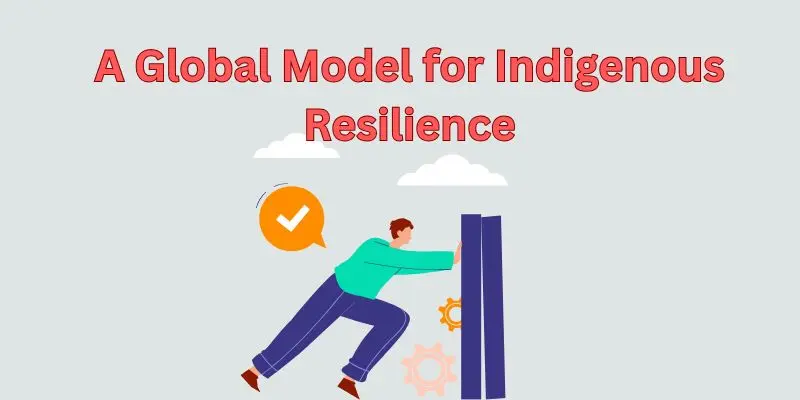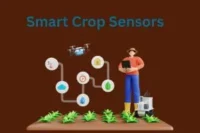AI and Ancestral Knowledge: Bridging the Future of Farming in the Andes.
Published: 21 Apr 2025
Begin by setting the scene high in the Andes of Peru, where Quechua-speaking communities have practiced farming for centuries. Describe how these farmers, often considered the guardians of biodiversity, have traditionally relied on natural indicators—cloud formations, bird migrations, and wind patterns—to guide their planting and harvesting.

Now, that ancient knowledge is colliding with a modern crisis: climate change. The skies no longer behave the same. Rain comes late or not at all. Frost strikes unpredictably. Farmers are watching their traditional cues fail them. Into this moment of uncertainty enters a new ally: technology.
The introduction should close with the key theme—this is not a story of one world replacing another, but of two systems coming together. AI is not erasing ancestral knowledge; it’s amplifying it.
So, guys, without wasting time, let’s jump into the article to learn AI and Ancestral Knowledge: Bridging the Future of Farming in the Andes.
2. Farming as Culture, Not Just Survival
Delve into the cultural significance of agriculture for the Andean people. Farming is not just a livelihood—it is ritual, memory, and identity. Discuss how the Andean highlands are home to thousands of native potato varieties, many of which have been passed down through generations.
Share how farming traditions have been preserved orally and through seasonal rituals. Offer a quote or anecdote from a local elder or farmer to ground the narrative in lived experience.
The goal here is to help the reader understand that when crops fail in these communities, it’s not just a loss of income—it’s a loss of heritage.
3. Climate Change and the Breaking of Traditional Patterns
Now introduce the threat. Outline the concrete effects of climate change in this region:
- Reduced snowfall in the Andes affecting downstream irrigation
- Early frosts and unpredictable rain patterns
- Increased pest infestations
- Soil degradation and water scarcity
These changes are making it nearly impossible for farmers to rely solely on ancestral environmental signals. Introduce the emotional toll—farmers feeling betrayed by the land they’ve always trusted, communities facing hunger, and youth abandoning farming for uncertain futures in cities.
4. From Satellites to Smartphones
Describe the introduction of agritech through partnerships between local organizations, scientists, and startups such as Waayki Tech, and international institutions like the International Potato Center.

Explain in accessible terms how:
- Satellite imagery and drones assess crop health and detect water stress
- AI models predict frost or disease outbreaks before they happen
- Climate sensors monitor soil and air conditions in real time
- Mobile applications deliver advice in Quechua, using audio cues for illiterate users
- A digital seed bank helps preserve and reintroduce native potato varieties
Importantly, emphasize that this technology is not imposed on the community. Farmers are active participants in its development. It’s a mutual exchange—where data serves tradition.
5. A Personal Transformation: The Story of María Quispe
Introduce a real or composite character—María Quispe, a mid-50s farmer from a village in Cusco.
Tell her story intimately:
- Her struggle with crop failures
- The heartbreak of watching her children go hungry
- Her initial skepticism of technology
- The moment she received her first frost alert from the mobile app
- Her decision to trust the recommendation and cover her fields
Walk the reader through the results: crops saved, income recovered, confidence restored. María begins to use the system regularly, even teaching neighbors. She revives native potato varieties that hadn’t been grown in decades.
Her story symbolizes not just survival, but revival.
6. Preserving Culture Through Data
Zoom out from María’s story to the broader impact of the project:
- Revival of native crops
- A shift in the perception of technology in rural communities
- Improved yields and income
- Empowerment of women and elders who are now considered knowledge holders and digital pioneers
Include reflections from both farmers and technologists. The emphasis should be on how AI doesn’t replace the human element, but enhances it.
This section can highlight the ethical approach of the project: building trust, co-creating solutions, and ensuring that knowledge flows both ways.
A Global Model for Indigenous Resilience
Place the story in a global context. Show how the blend of indigenous knowledge and AI is becoming a model for other climate-vulnerable communities—whether in the Himalayas, the Sahel, or the Arctic.

Discuss the implications for food security, biodiversity, and environmental justice. This section should encourage readers to see the story not as an isolated success, but as a proof of concept.
Conclusion.
End with a reflective and poetic tone. Return to María or an elder’s voice—someone who reminds us that while technology can offer forecasts and alerts, it is tradition that teaches patience, respect for the land, and communal living.
References.
According to the International Potato Center (CIP), indigenous farmers in the Andes are working with scientists to combine AI-driven tools with centuries-old farming wisdom, aiming to protect native potato varieties and adapt to a rapidly changing climate.
Here is the online source regarding AI and Ancestral Knowledge: Bridging the Future of Farming in the Andes.
Author Nam
IEEE
Proposal for a model of smart agriculture based on the application of ancestral knowledge in the cultivation of medicinal plants

- Be Respectful
- Stay Relevant
- Stay Positive
- True Feedback
- Encourage Discussion
- Avoid Spamming
- No Fake News
- Don't Copy-Paste
- No Personal Attacks

- Be Respectful
- Stay Relevant
- Stay Positive
- True Feedback
- Encourage Discussion
- Avoid Spamming
- No Fake News
- Don't Copy-Paste
- No Personal Attacks





